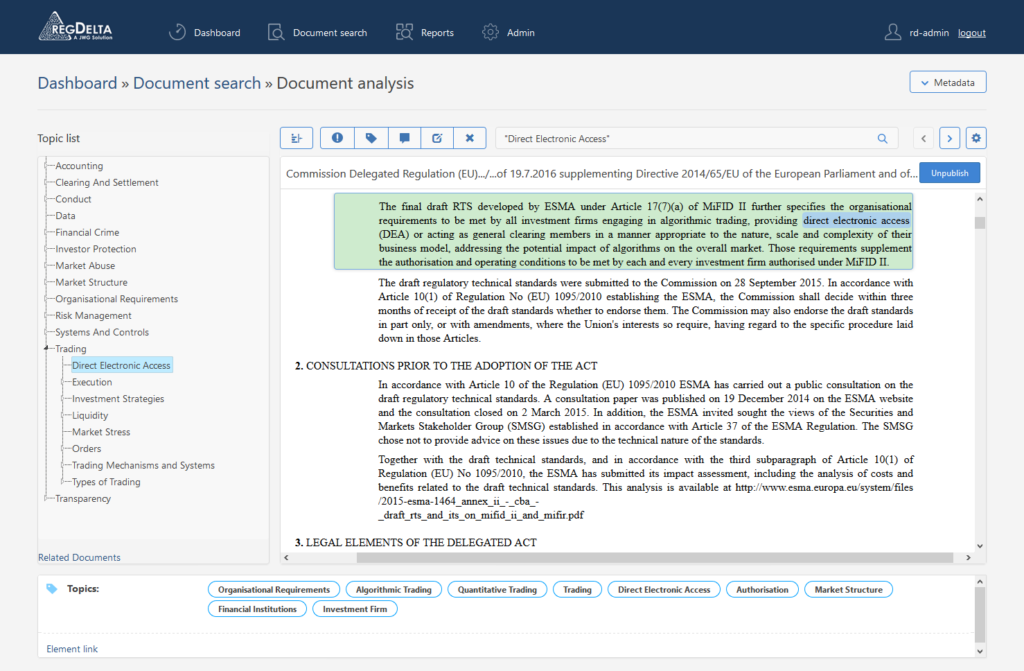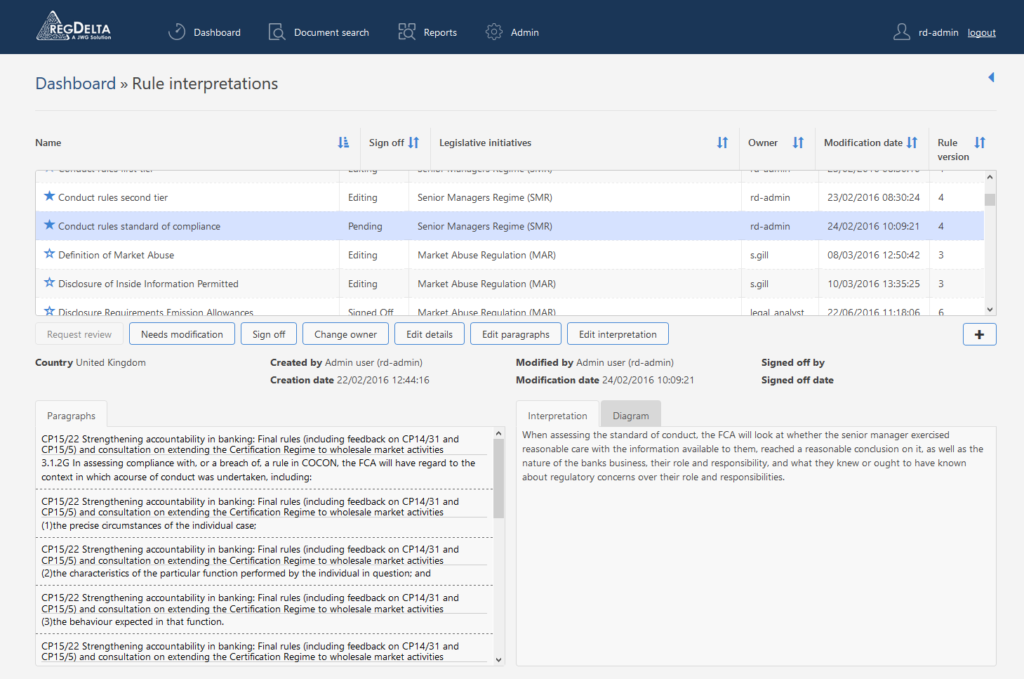The challenge
The financial services sector faces the daunting task of navigating through numerous pages of financial regulations, while also dealing with political challenges such as Brexit and Covid that result in frequent policy changes and evolving rules. The stakes are high, with billions of dollars in fines and personal accountability for senior leaders. Historically, companies have tackled compliance by hiring large teams to manually sort through and evaluate all regulatory documentation – an approach that is fast becoming unsustainable. JWG RegDelta, an innovative AI-powered platform designed to efficiently and accurately scan thousands of regulatory documents, was created to address this challenge.

Picking the right partner
JWG collaborated with 67 Bricks to create a custom platform capable of managing the vast amount of content necessary for producing effective regulatory insights. Our extensive expertise in handling large volumes of intricate data and our innovative problem-solving skills made us the ideal choice for this build.
Blending AI and human expertise
The system uses NLP to machine-read thousands of regulatory documents and provide human experts with the information needed to make recommendations. RegDelta machine reads the regulations and provides intelligent suggestions that can be overridden or reassigned by human analysts. This blended augmented process between people and AI provides the perfect mix of speed and value. In addition to hundreds of NLP tags and the automatic classification of each paragraph according to a carefully curated financial services taxonomy of over 5,000 topics, each document is summarised and enriched with 12 metadata fields by JWG analysts, allowing users to navigate vast libraries in a seamless workflow.
Integrating with customer processes for vital risk management
JWG RegDelta also integrates seamlessly into a bank’s workflow, enabling them to prove to auditors that they have seen, interpreted and acted on any regulatory changes, including any new rules they have created and applied to various business functions to ensure compliance. This crucial risk management aspect of the tool is essential for firms that want to proactively safeguard their operations in a rapid and effective manner.
Results
RegDelta has become the gold standard in regulatory intelligence in both depth and breadth; in 2021 alone, JWG filtered 612,000 events from 700+ regulatory publishers, and by year-end converted 28,000 documents with 138 million words describing 634 legislative initiatives.
The platform has won scores of industry awards, including the following in 2022/23:
- Regulatory Solutions Provider of the Year– Europe & Asia’ 23’ – Euromoney
- Networking Platform of the Year – Corporate LiveWire
- Best AI-Powered Compliance RegTech (UK) – CFI.co
- Best Global RegTech News & Networking Platform 2022 – Worldwide Finance
- Top 10 RegTech Solution Providers 2022 – GRC Outlook
 Figure 2: Rule interpretation linked to regulatory text
Figure 2: Rule interpretation linked to regulatory text







